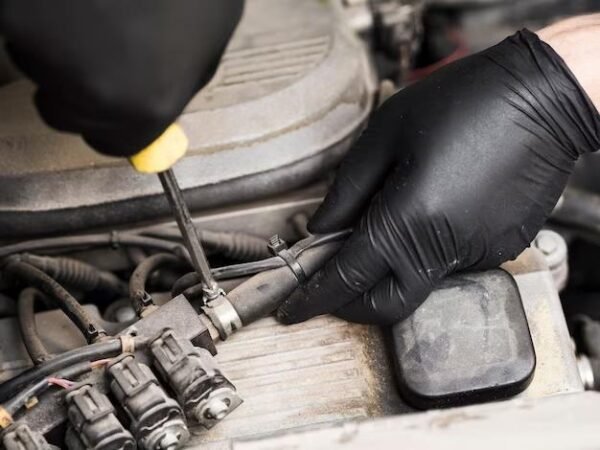Navigating the roads safely is a priority for every driver and pedestrian. With the advent of modern technology, vehicles today are not just means of transportation; they are equipped with sophisticated systems designed to protect lives. In this discussion, we’ll delve into the critical role of advanced safety features in modern vehicles, highlighting how these technologies contribute to making our journeys safer and more efficient.
Table of Contents
The Evolution of Vehicle Safety
Vehicle safety has come a long way from basic seat belts and airbags. Today, manufacturers integrate a range of sensors, cameras, and computing power to create systems that not just mitigate the impact of accidents but actively prevent them. These advancements are a testament to how much automotive safety technology has evolved, driven by both consumer demand and regulatory standards.
One pivotal area of evolution is the development of Advanced Driver Assistance Systems (ADAS). These systems use a combination of technologies to ensure vehicle safety and driver convenience. Features like automatic braking, blind-spot detection, and adaptive cruise control are now standard in many new vehicles, offering drivers an added layer of protection.
The Role of ADAS Calibration Specialists
As vehicles become more complex, the need for precision in safety systems grows. Enter ADAS calibration specialists. These professionals play an essential role in ensuring that the sophisticated components of driver assistance systems are precisely aligned and functioning correctly. Calibration is crucial because even a small misalignment can lead to inaccurate system responses, compromising the vehicle’s safety capabilities. Proper calibration aligns the vehicle’s safety features to meet manufacturer specifications, ensuring optimal performance and reliability.
Safety Features in Modern Vehicles
Modern vehicles are equipped with a plethora of safety features designed to protect passengers and reduce the likelihood of accidents. Here are some of the most prominent:
Automatic Emergency Braking (AEB)
AEB systems monitor the road ahead and automatically apply the brakes if a potential collision is detected. This feature can significantly reduce the severity of crashes or prevent them altogether, providing critical intervention during distracted moments.
Lane Keeping Assist (LKA)
Lane Keeping Assist helps prevent unintentional lane drifting, a common cause of accidents on highways. By monitoring road markings, LKA provides gentle steering corrections to keep the vehicle centered in its lane, greatly enhancing road safety.
Adaptive Cruise Control (ACC)
ACC goes beyond traditional cruise control by using sensors and radar to adjust the vehicle’s speed to maintain a safe distance from cars ahead. This feature is particularly useful in varying traffic conditions, reducing driver fatigue and maintaining a consistent flow of traffic.
Impact on Driver Behavior and Road Safety
The introduction of advanced safety features has not only enhanced vehicle safety but also influenced driver behavior. Drivers tend to feel more secure and comfortable, knowing that their vehicle can assist them in critical situations. However, it’s important for drivers to remain attentive and not become overly reliant on these technologies. The goal is to use these features as a complement to responsible driving practices, not a replacement.
The Future of Vehicle Safety
Looking ahead, the future of vehicle safety appears more promising than ever. With the integration of artificial intelligence and machine learning, vehicles will not only react to immediate threats but also predict and adapt to potential hazards with greater accuracy. Furthermore, as we move toward fully autonomous vehicles, the interaction between human-driven and computer-controlled cars will be crucial in maintaining road safety.
Final Thoughts
Modern vehicles are more than just transportation tools; they are guardians of the road. The integration of advanced safety features marks a significant step forward in automotive technology, aiming to reduce accidents and save lives. While technologies like ADAS are revolutionizing vehicle safety, the importance of human vigilance remains paramount. By understanding and appropriately using these technologies, drivers ensure that they, and everyone else on the road, remain ‘road ready.’
Embracing these innovations, guided by the expertise of professionals, we can look forward to safer roads and more secure journeys. As we continue to innovate, the horizon for vehicle safety technology is not just about preventing accidents but ensuring a harmonious blend of human and machine on our roads.





